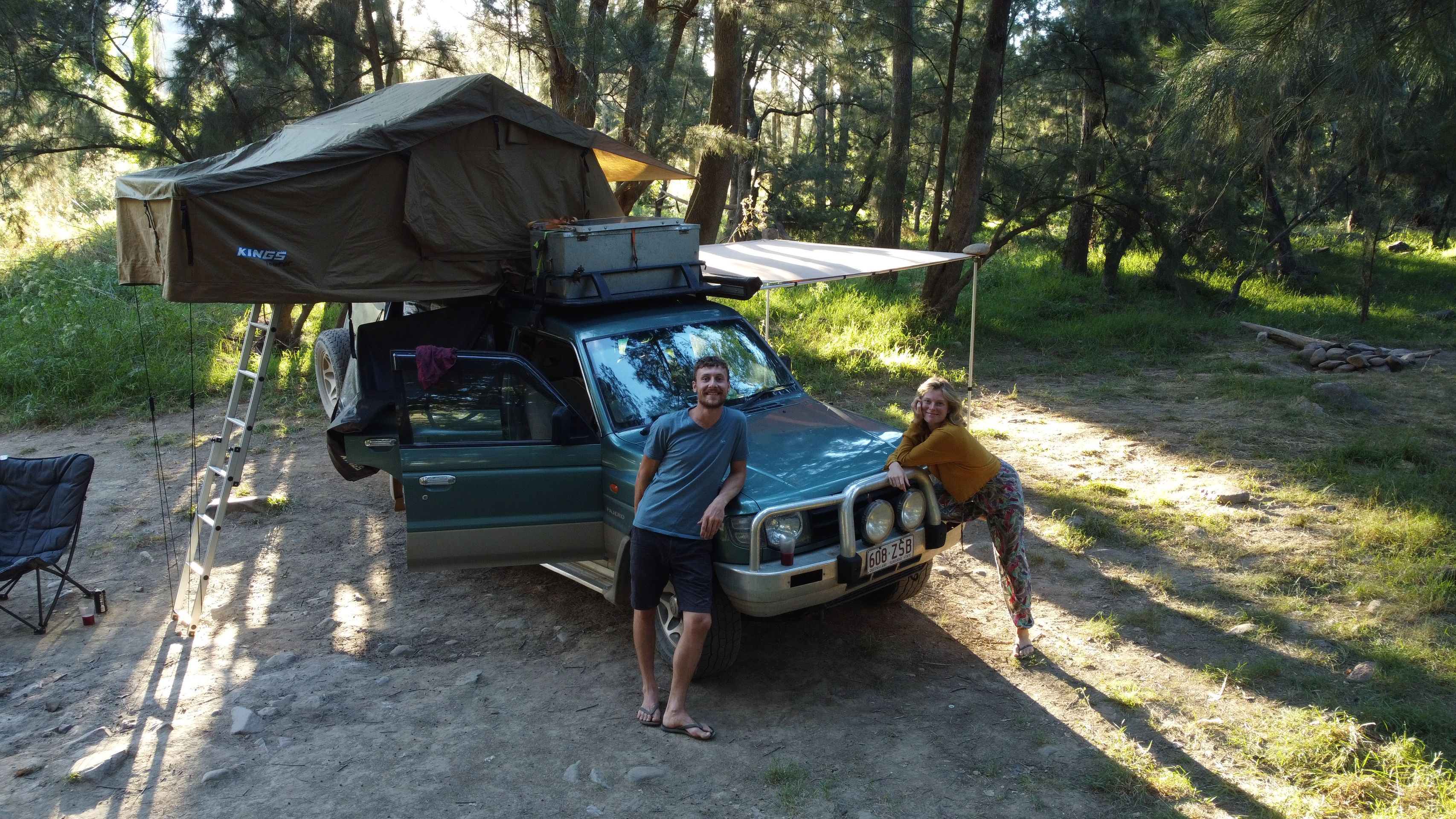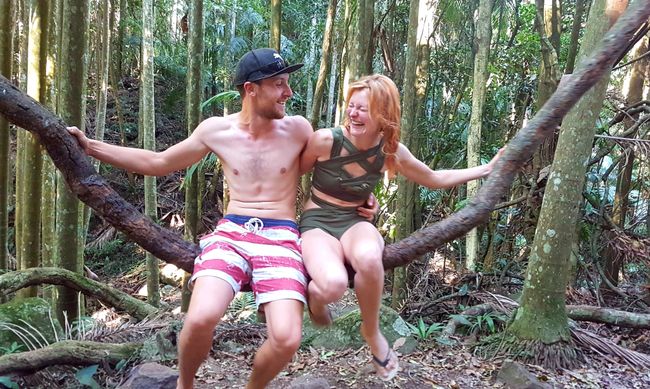Country life, Mount Isa, and Lawn Hill
បោះពុម្ពផ្សាយ: 16.08.2020
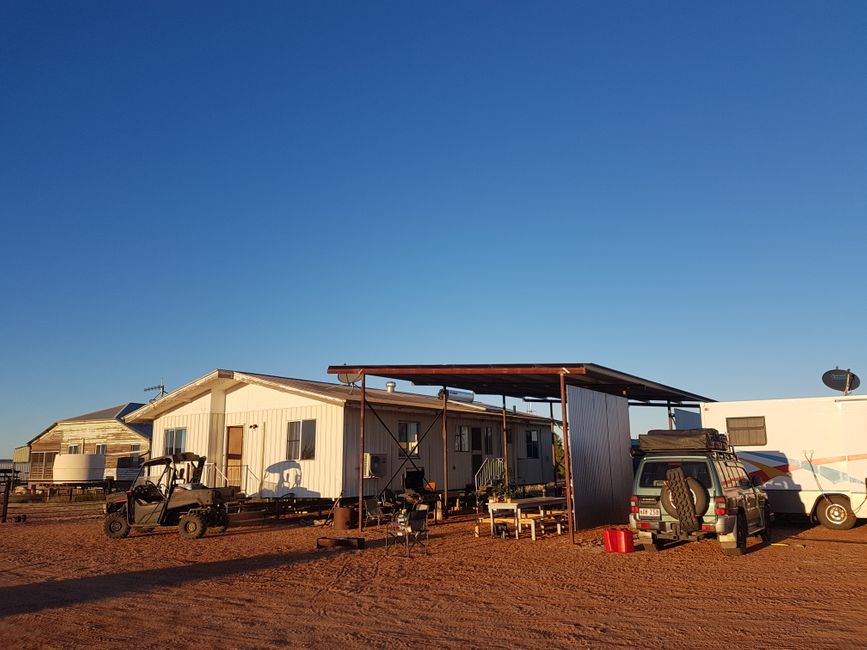
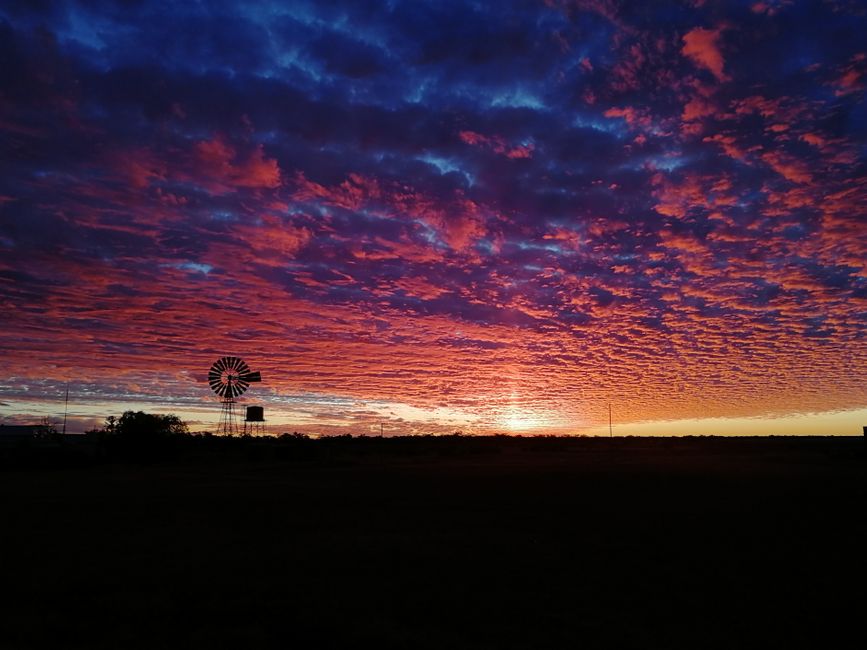
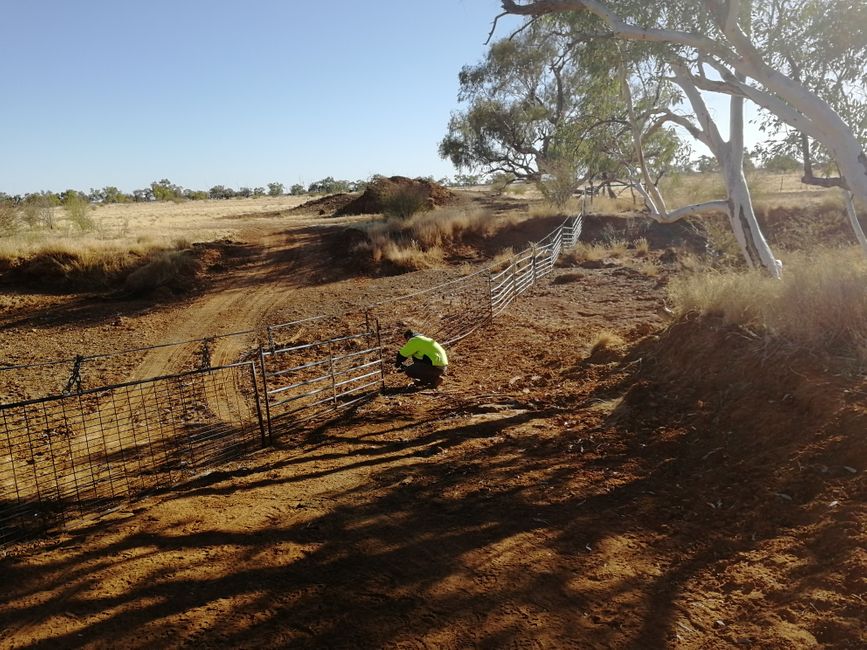
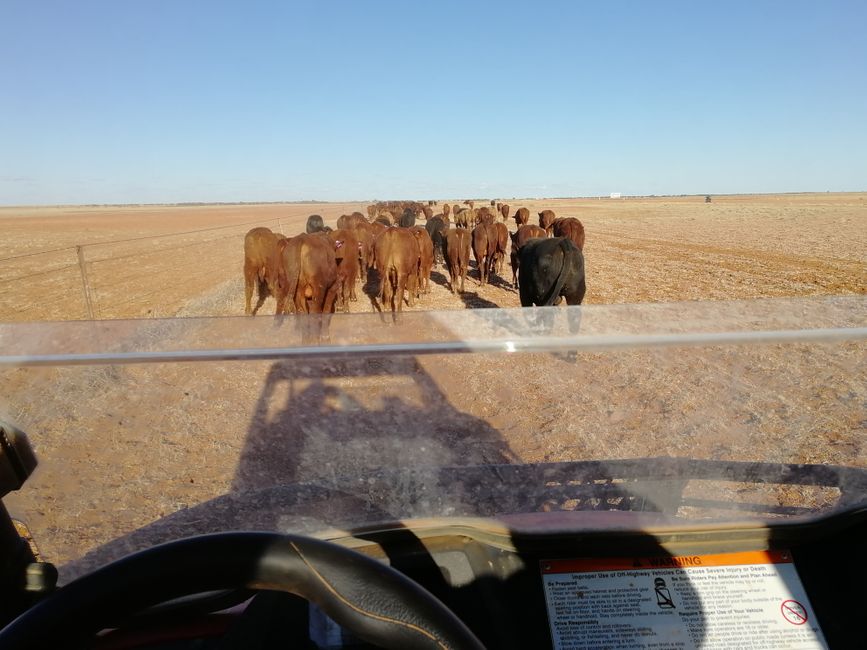
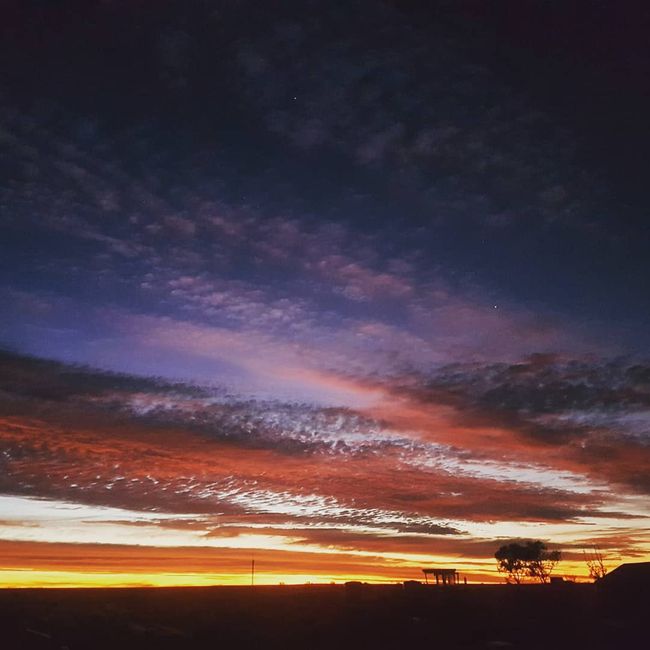
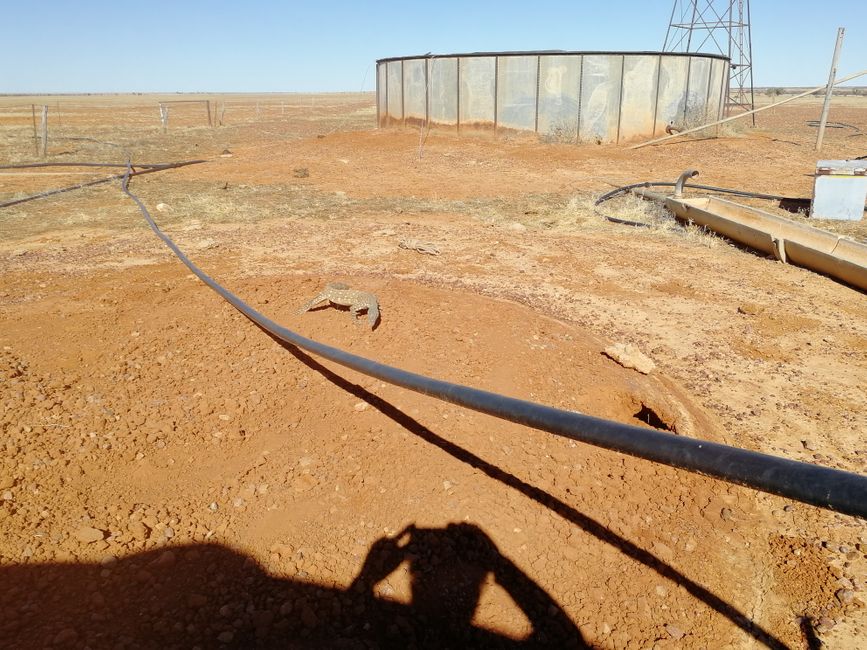
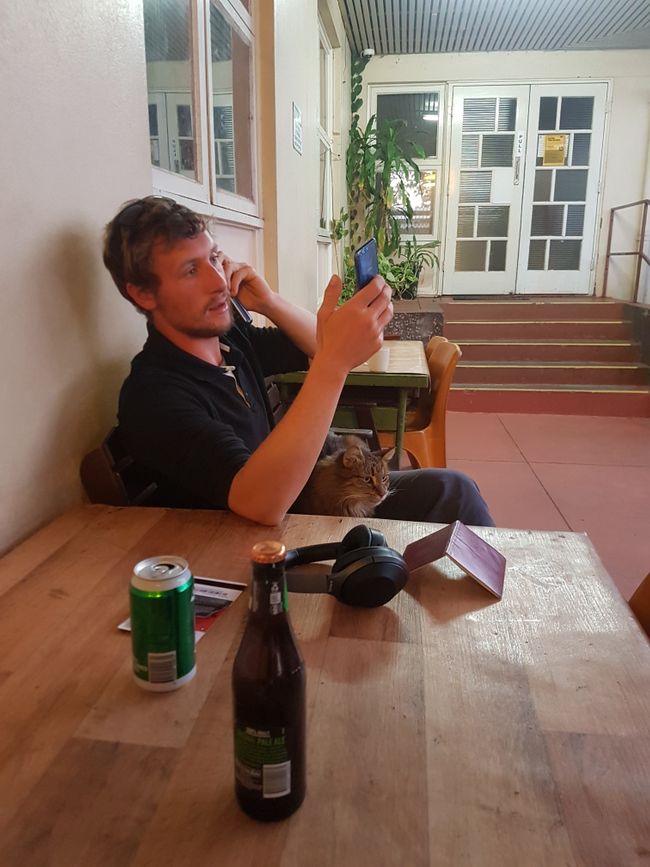
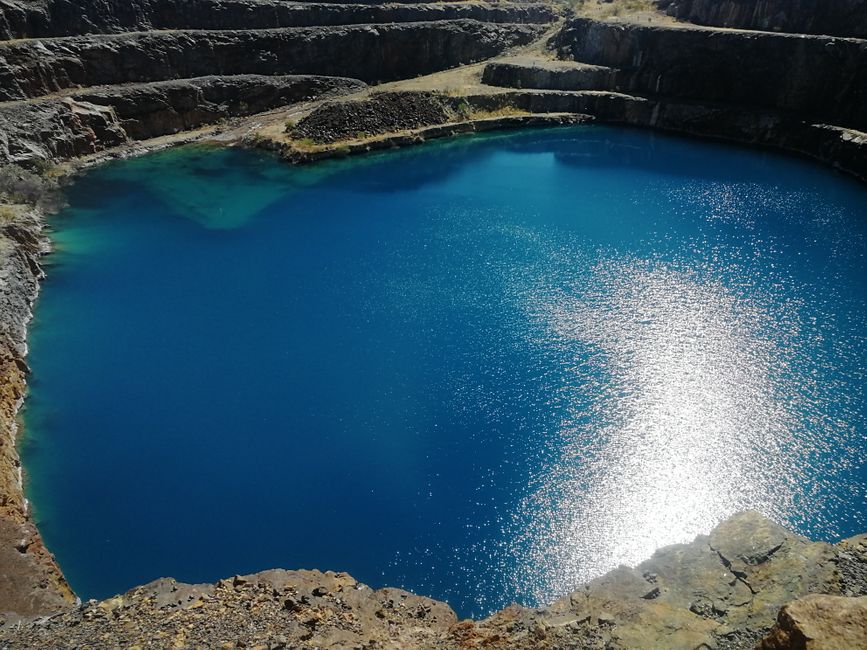
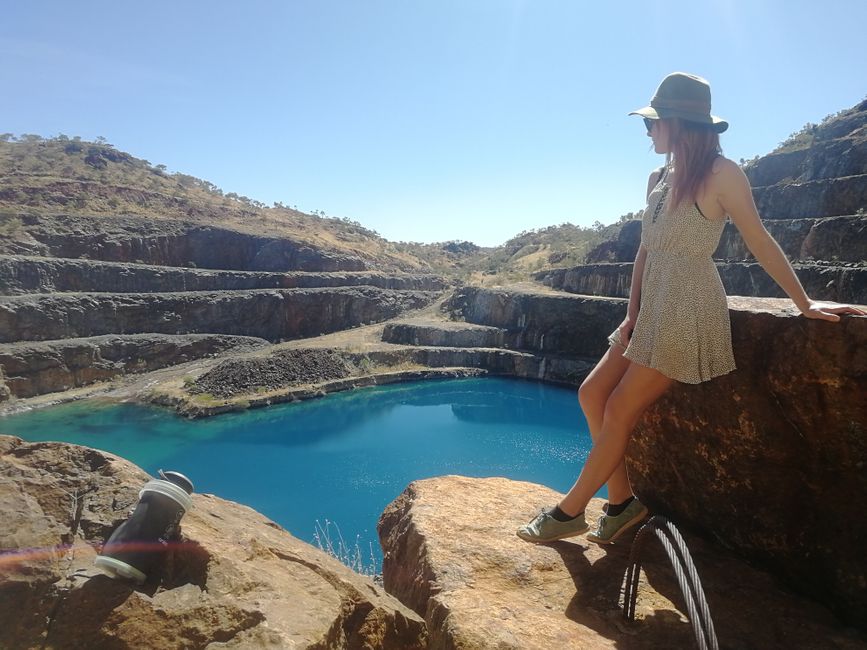
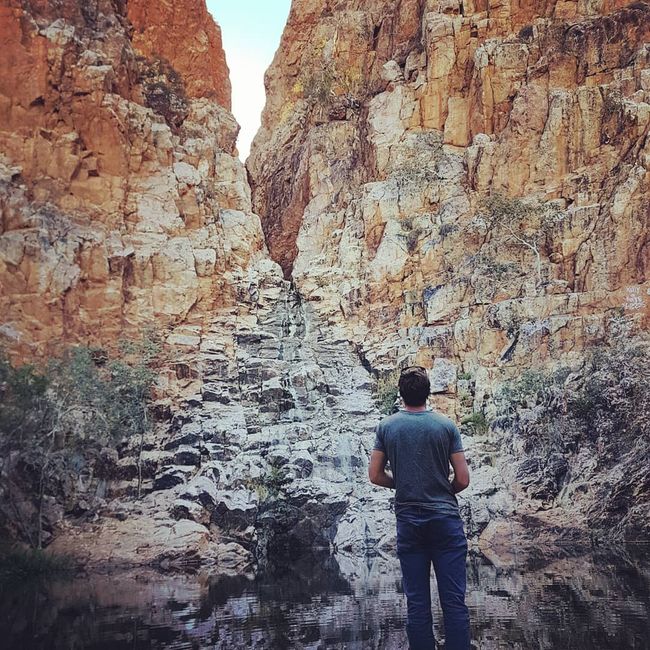
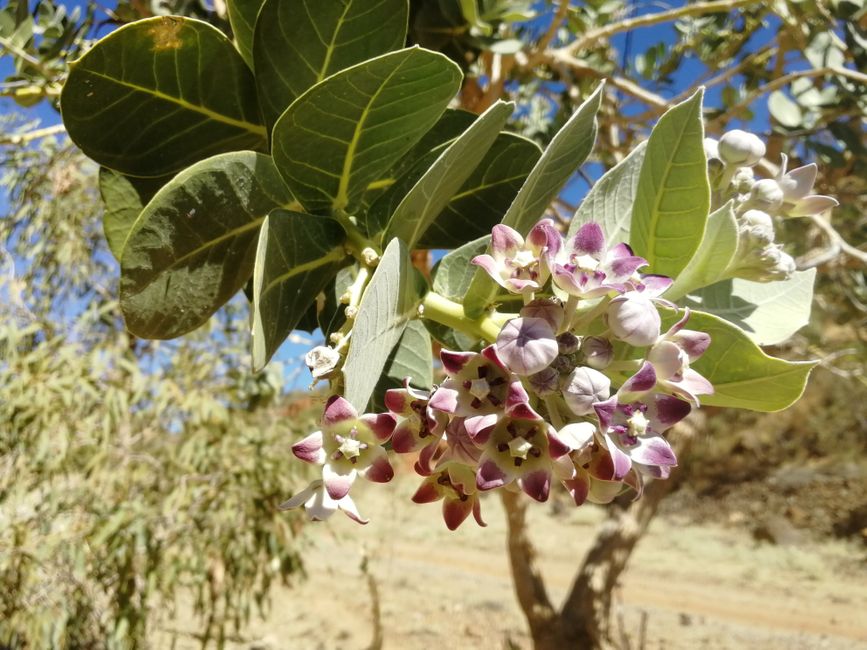
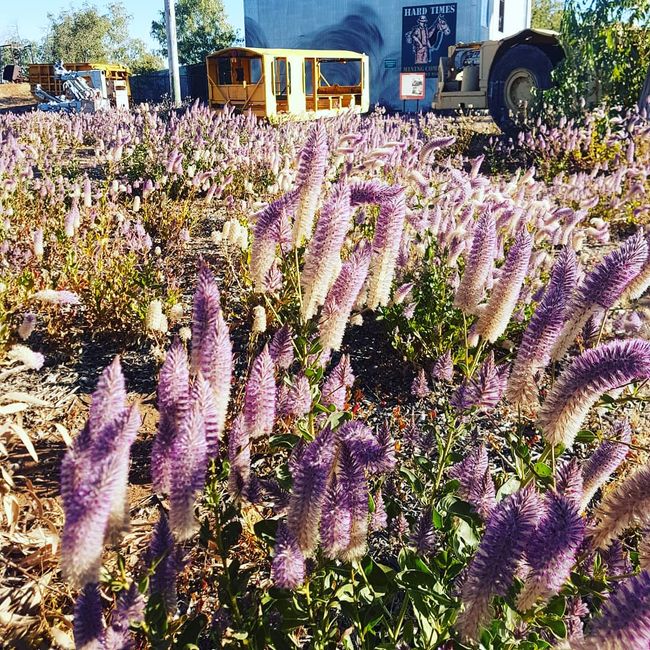
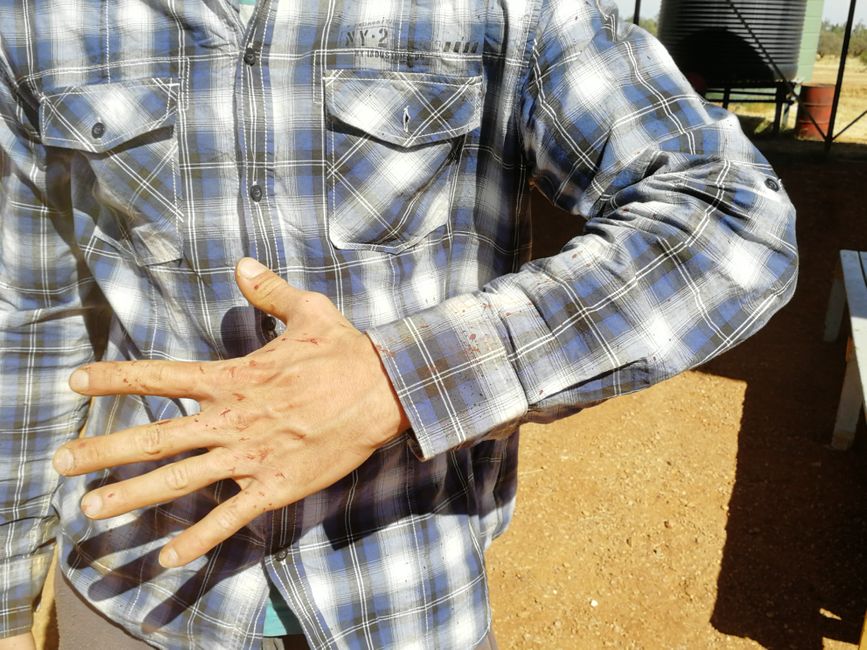
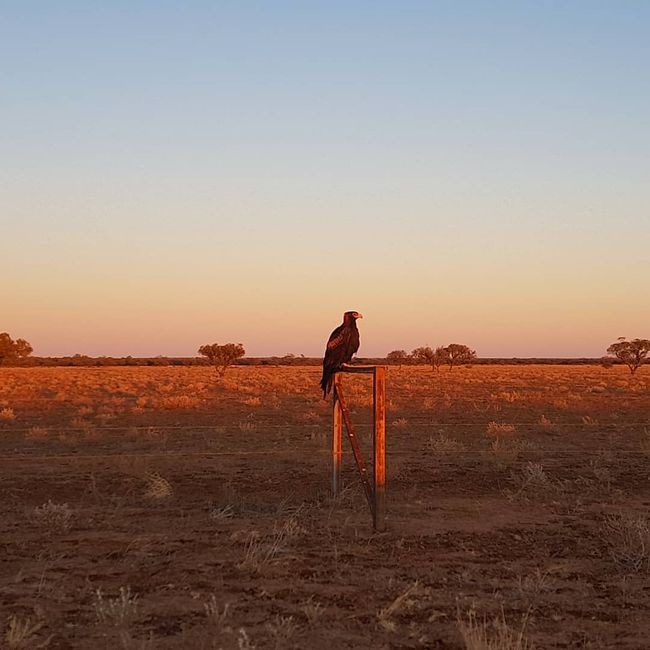
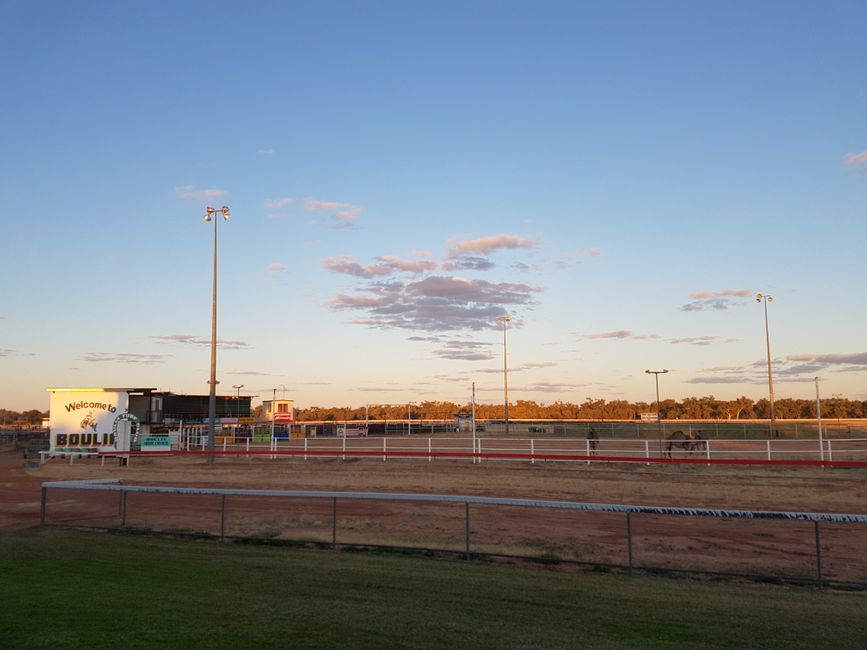
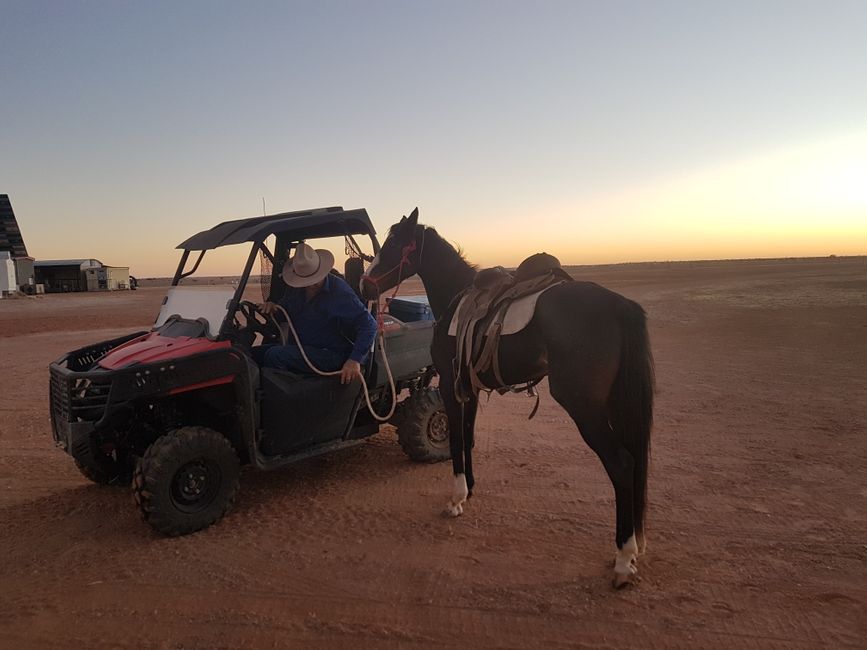
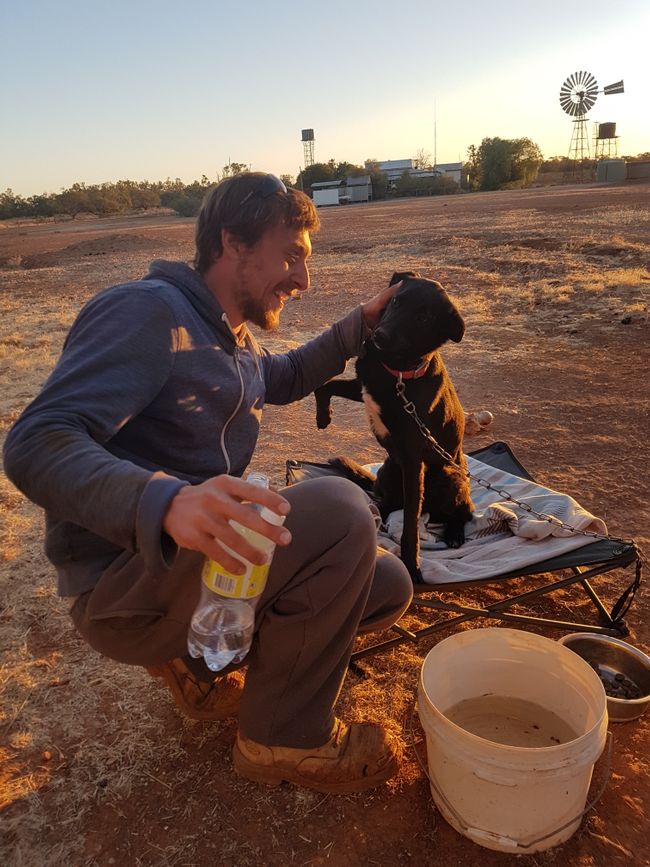
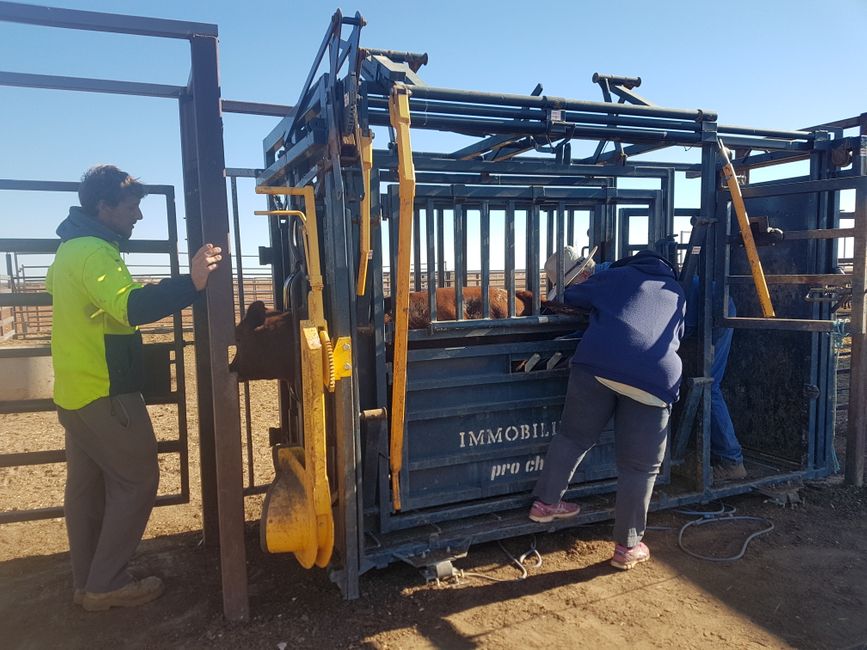
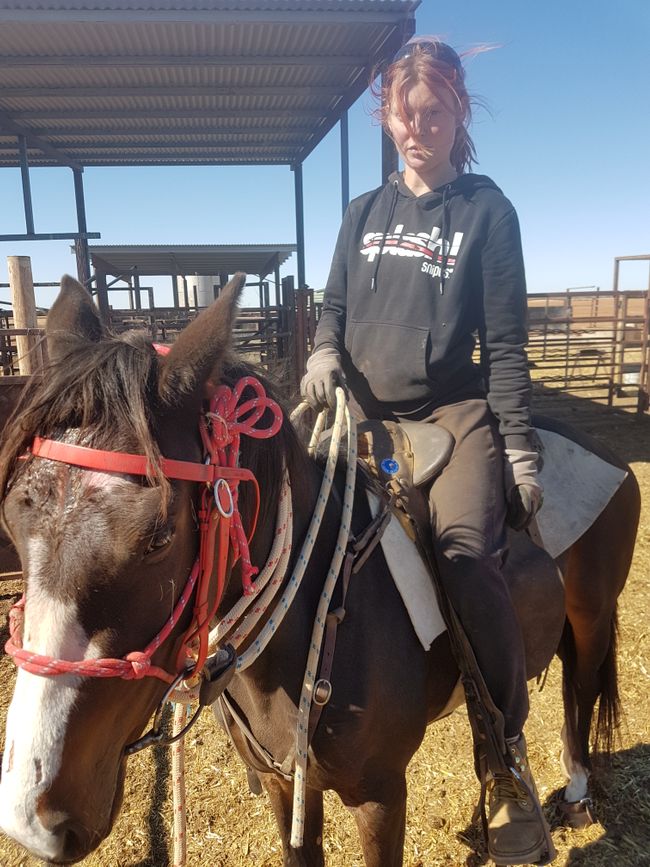
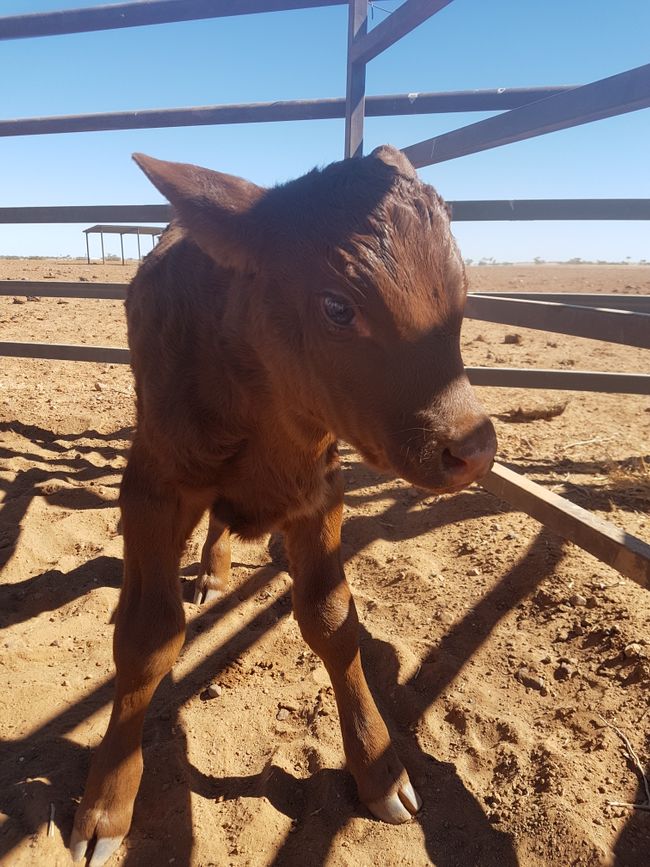
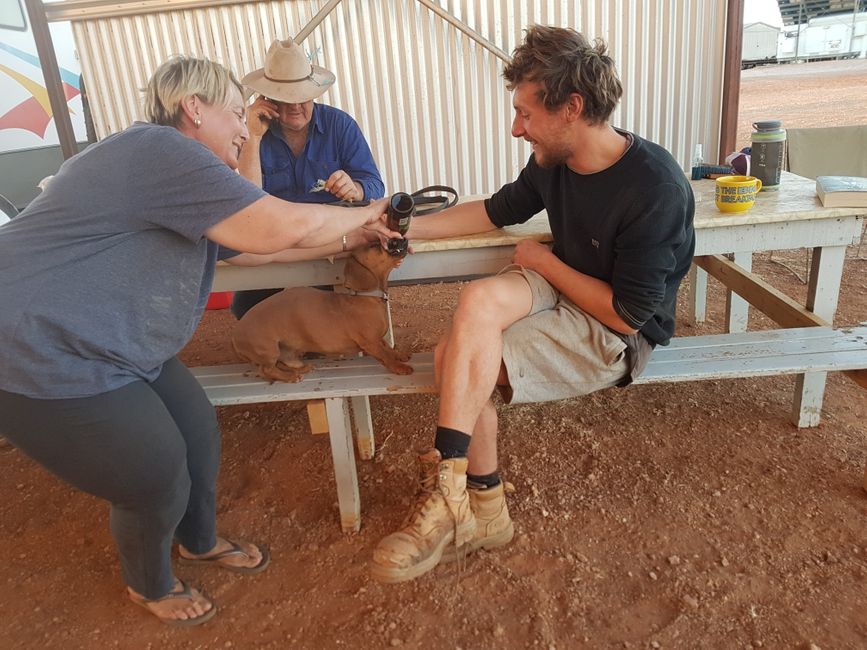
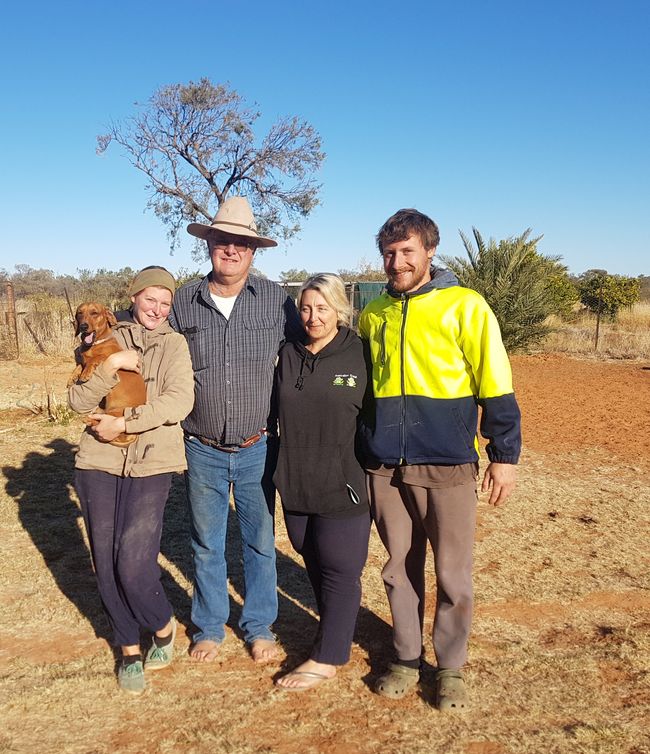
ជាវសំបុត្រព័ត៌មាន
Upon arrival at the farm, we were first greeted by a dachshund who barked at us incessantly. His name is Bruce, as we later found out, and he belongs to Sam, the owner of the farm. Unfortunately, no one was home, so we stood there somewhat confused. Fortunately, Jeff, a man in his sixties, arrived shortly afterwards and greeted us, confirming that we were in the right place. He and his wife Jen are traveling around in a converted truck, helping out on various farms with specific tasks. He showed us around a bit, showed us the farm, let me load some hay onto the tipper with the forklift, and we took it to the young cattle in the yard. The yard is a small enclosure divided into sections where cattle are confined to sort them (bull, steer, cow, calf, heifer) and give them ear tags, branding, and dehorning. That was it for the day. The actual work was supposed to start on Monday, but we also helped out a bit on the weekend. Clara's main task was to tidy up the house and help Mrs. Beauchamp with the household chores, while I usually accompanied Jeff on the farm work. The first week, we spent most of our time working with the cattle in the yard. We trained them to go through gates, drove them along fences in groups, and finally, they were branded, castrated, ear-tagged, dehorned, sorted into males and females, and put into various paddocks. Clara, who found the work with the old lady in the completely cluttered and icy-cold house exhausting, was happy to help out in the sun for a few days and quickly became the best ear tagger for cattle on this side of the equator. The weekend was dedicated to drafting. This involves using helicopters and motorcycles (previously horses) to gather the cattle from various paddocks and sort them for sale or transport to the abattoir. By the afternoon, that was done, and Sunday was reserved for drafting. In the morning, we started separating the bulls from the cows and calves, the heifers (cows without calves), and the breeding bulls. The bulls and a few old and no longer fresh cows were sent off for slaughter, while the rest were kept. In the afternoon, Jeff and I went out again to repair a pump station for the water troughs on one of the paddocks. On the way there, however, we saw so many cattle that should theoretically have been in the yard that we changed our plans. We told the others that we needed help, but Sam didn't really care. He thought we already had enough. However, he only said that the next day, when we had already brought a larger group of cattle to the yard, along with a wild horse that had joined them. It took until it was dark when we finally reached the yard, and some idiot had closed the gate that was always open. When we finally opened it, we couldn't get the cattle and the horse through anymore, it was already too dark. So we had to leave them on the road, hoping they wouldn't get run over. On Monday morning, the road trains arrived, big trucks with 3 trailers, and we loaded the cattle onto them. Jeff had left early to gather the other group from the road, but he was a bit too late, so in the end, we had to send away a few stags that were actually too small (Sam didn't care, he just wanted it all over with). By noon, the loading was done, and Jeff and I went back into the paddocks to fix a few water points, repair fences, and see where else there were cattle roaming that didn't belong there. This whole ordeal cost us a good 3 weeks, as there was always something missing, Sam kept us occupied with other things he considered more important, and the equipment didn't work as it should - endlessly annoying. Fortunately, we had Friday and the weekend off after drafting. We drove to Mount Isa, the largest city in the area, about 3 hours north of Boulia. When we arrived, we took a look around, treated ourselves to a delicious breakfast/lunch in a cafe, and then checked into the hostel. Afterwards, we went to the local museum about the history of mining in the city. The city only exists because of the mine, which is one of the largest in Australia and one of the deepest in the world. Here, copper, zinc, and lead are mined and transported to the coast for further processing or shipping. It's a bit like Wolfsburg, but with mining instead of cars.
On Saturday morning, I went for a jog, part of the route led along the dried-up riverbed. It's hard to imagine that there was occasional water there, at the moment, some people use the dusty track for illegal motorsports. Matze and I set off for Mary Kathleen Mine, where uranium was mined until the 1980s. You can now walk along the different levels of the open-pit mine, but swimming in the pit below is not recommended, and the campsite is several kilometers away. The variety of minerals is impressive, the rock walls change between ochre, green, yellow, and various pastel variations. Various salts that have been dissolved from the rock by rain and weathering form snowflake-like clusters on the wall, they sparkle and are very delicate. The water shines in an intense blue, the shallower sections are very clear and shaded in shades of rust brown, right next to the rock wall, the water is very dark blue and obviously very deep. There don't seem to be any large living creatures in it, the surface is extremely flat, and you can see a perfect reflection of the colorful rock wall. It is very calm, and the sun is as hot as it hasn't been since Cairns. A cool down would be nice... But caution prevails, and we confine ourselves to admiring. Following the advice of the hostel owner, we continue to Fountain Springs, where a natural spring covers the otherwise barren vegetation with greenery. The water is pure and icy cold, I can only make it up to my knees before my toes go numb. In the rocks behind it, a V-shaped depression has been cut, from which, apparently, a small waterfall forms during rain. Matze climbs quite a bit, the pink granite rocks with quartz inclusions inspire confidence, yet my heart sinks again. Not far away, you can visit the remnants of a small mining town that used to have a railway connection. We decide to follow the former route to the mine, according to Matze's offline map, the off-road track will also meet a larger road 20km later, which would save us about 50km of driving. The off-road promise is definitely kept, but I start to feel uncomfortable as we drive over some pretty sharp rocks with undiminished tire pressure. However, our car is doing well once again, except that the fuel is slowly running out. The only people we encounter unfortunately drive a diesel car, they say that the road ends at the mine... Oh dear. Well, we'll drive that last kilometer anyway, despite this gloomy outlook, the landscape is attractive and looks like the foothills, with rocky peaks sticking up everywhere, and the sunset bathes the red-ochre colored rocks in a wonderfully warm light. Some devices and machine parts were simply left at the mine, some of the water pipes and the water tank are still there. When we finally set off on the unplanned long journey home, we discover the 2 men with the diesel car. They have been waiting for us! Such wonderful people, they give us their number and say that if we run out of fuel just before Mount Isa, they will come to our aid with a jerry can of petrol from the town. Once again, we're so lucky! And as it turns out, when you bring an umbrella, everything turns out fine, and our car makes it to the petrol station with the last drops. Somewhat exhausted from the day, we treat ourselves to a delicious Pad Thai and have a relaxing evening at the hostel. On Sunday morning, we set off for Lake Mondara, an artificial reservoir nestled between hills. There are several smaller islands that provide a paradise for water birds. Although the water makes me shiver, I swim a large lap, as I won't have the opportunity to do so in dry Boulia for a while. Back in Mount Isa, we treat ourselves to a trip to the cinema. The selection of only 4 movies wasn't exactly great, but we unanimously agreed on 'Red Shoes', a Snow White adaptation. Definitely not a bad movie, made even more entertaining by the exclamations of the numerous little girls dressed as princesses in the audience. We made it back to Boulia just in time for sunset. Jeff and Jenn have news for us: Jeff caught the horse that was running around lost with the cows in the yard. They want to try to tame it and find a good person for it. Unfortunately, I rarely have the opportunity to go to her together with Jeff, as Mrs. Beauchamp keeps me busy with her cooking preparations, especially in the evenings when he finally finishes work. When we finally manage to have a lesson together, it's only thanks to Matze, who allowed himself to be persuaded by me to take over the cooking part. I'm impressed by how calm the mare is. Jeff named her Covid, to the horror of me and Jenn. You can't name a living being that way!! Well, it's nice to see how quickly she has learned to trust humans thanks to Jeff. I receive an introduction to horse whispering and a few days later, I'm the first one to sit on her back, of course with Jeff's support. Covid, who would be called Venus if it were up to me, can be led around by me without any problems, even though cars make her nervous, she doesn't run me over. Making progress with my tidying-up projects, even though Mrs. Beauchamp would keep everything and would rather have everything back on the shelf where I found it. But that wouldn't improve anything, and Sam would continue to buy all sorts of things because she wouldn't know that we already have them. I discover some interesting things, like Mrs. Beauchamp's wedding dress, which she had already been desperately looking for, tourist brochures from the 50s/60s, homemade baby clothes, original packaged alcoholic beverages from the 60s, antique kitchen utensils. It's not always easy to determine their purpose. The thick layers of dust that have accumulated on everything over the years are an eyesore, some are so bad that I work with a face mask. The old cheap plastic bags or packaging materials that simply disintegrate when touched and dance around in a snowstorm-like whirl are annoying. The other potted plants have to wait until the fence around our building block is completed; they will form a visual boundary and provide shade... once they are big enough. Mrs. Beauchamp keeps me busy with cooking and baking, I have already baked 3 chocolate cakes, 1 dried fruit cake, 2 orange cakes, and several crumble desserts. I also prepared a lot of meat, including large pieces that initially intimidated me.... And I peeled a cooked cow tongue (see photo), which was not exactly a highlight, but I made a great effort and worked hard to convey an unrepulsed impression. On August 3rd, Mrs. Beauchamp flies from Mount Isa to Brisbane for a tissue sample and surgery because something is growing in her lung. So we had the whole property to ourselves on that day. I worked on the peeling paint on Kevin's cabin, which is supposed to be repainted, and Matze tidied up the yard using the forklift. All deliveries are always unloaded there and then sit there for eternity, not a pretty sight, especially for the guests who will soon be coming for the farm's 10th anniversary. Sam called me in a few more times to help repair some vehicles; that was it. Fortunately, the old lady wasn't there anymore, which made our lives (especially Sam's and Clara's) much easier. Since we had been working on weekends for the past few weeks, we were able to take 5 days off starting on Saturday. Fantastic. We loaded a few things into the car, borrowed a compressor from Sam, and set off. Our destination for the day was Lawn Hill National Park. First stop: Mount Isa. We bought all the necessary food and drinks, filled up the tank as much as we could, and continued our journey. Everything was going well until about 160 km before Lawn Hill, then the road turned into gravel and dirt - red dirt. I let a little air out of the tires to prevent punctures, and we continued. At some points, the road was really bad, and we were progressing slower. And it started to get dark, which is not good because that's when the kangaroos become active. 20 km before our destination, the car started to feel wobbly. Oh crap! We got out, checked. One tire was flat, another was losing air. What a mess. The cheap spare tire we got after the porcupine incident had a hole, and the other one, which was still good after the porcupine incident, was flat. The not too deep holes were now too deep. Too much heat, too much stress. Fortunately, we had Sam's compressor. In a few minutes, the tires were full again, and we made it to the campsite. The reception was already closed, but some staff were still there, and we checked in. We chatted with a group of older gentlemen sitting at the entrance, drinking beer, about our tire problem, and they promised to help us the next day. I pumped up the tires again, we found a spot, set up camp, had dinner, and went to bed. The next morning, I started lifting our car and installing the spare tire. Clara brought two of the men from the previous evening with her when she came back from the reception for paperwork and payment, and after a short time, the repairable tire was fixed. Such a relief. With everything installed, we went for a short hike, and then we had breakfast. After that, we went on a longer hike towards Lawn Hill Gorge, a small canyon traversed by a river. Unfortunately, we were on the wrong side and couldn't access the actual hiking trails, so we made our own path. We climbed the sandstone rocks in a gap and had an incredible view of the valley and the canyon. We walked along the rocks to find a descent, which we found about an hour later, and climbed back down into the valley. The way back through the cattle paddocks on the wrong side was easy again, and we arrived back at the campsite exhausted and satisfied. We relaxed a bit, had dinner, and after a nice campfire, went to bed. In the morning, we packed everything up again and drove to the neighboring campground where all the hiking trails start. This time, we were on the right side. We saw a cave full of rock paintings that Aboriginal people used as shelter for thousands of years. And the Indarri Falls, one of the most beautiful waterfalls I have ever seen. The calcium-rich water of the river has built up limestone cliffs over thousands of years, which are now completely overgrown, creating a natural barrier over which the water flows at various points. It was a hot day, so we jumped in, completely naked. It was crowded with other people, but since we didn't have swimwear, we didn't care. On the way back, we drove extra carefully, but everything went smoothly. We made a stop at a fossil excavation site (one of the best in the world), looked at some bones, and reached Camooweal on the border to the Northern Territory around 8 pm. We camped at the free campsite, made a little fire, and explored the town the next morning. Clara visited the local drover's museum afterward and got an explanation of how the cattle used to be driven across the country to the sales points and slaughterhouses. Then it was back to Mount Isa, where we stayed at the campsite and ordered a really delicious (and large) pizza. Feeling full and happy, we went to bed. On Wednesday, we had to go shopping. Fuel, some stuff for the car (oils and tire repair), food for the weekend, and beer. Clara had a massage at 12, and I tried to get new tires. Not a single place had our size, so we're still driving with the spare. When we finally got everything done, we headed back home to the farm. The drive was relaxed, the weather was nice, and we reached the farm just before sunset.
ជាវសំបុត្រព័ត៌មាន
ចម្លើយ
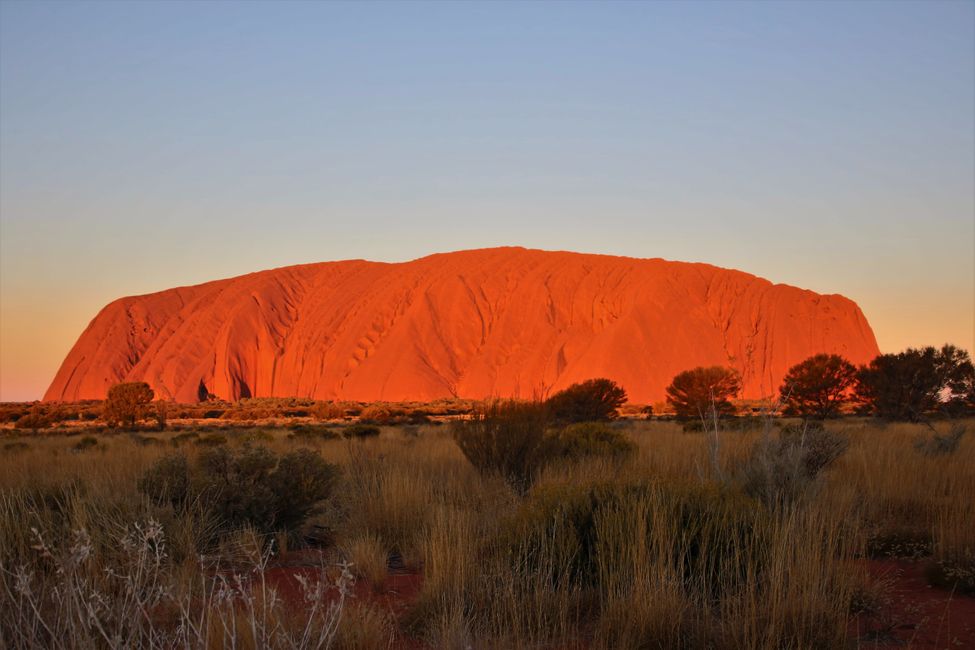
របាយការណ៍ធ្វើដំណើរ អូស្ត្រាលី
